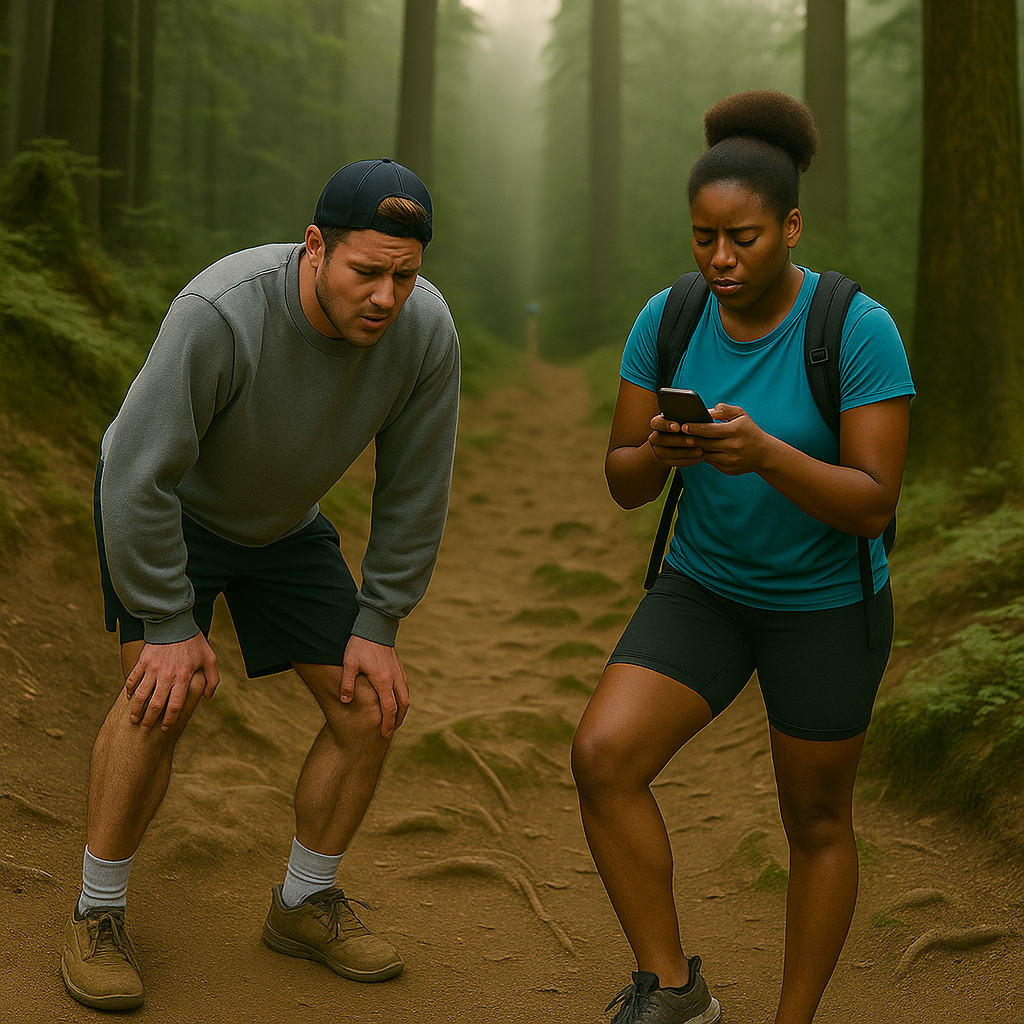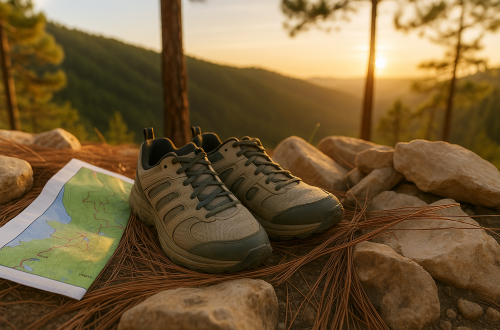
What are the common mistakes new trail runners make?
Why trail running is different from road running
Mistake #1: Wearing the wrong shoes
This one’s a classic. New trail runners often hit the dirt in their road running shoes, thinking they’ll be fine. But trail shoes are designed with grippier soles, sturdier builds, and better protection for uneven terrain. Without them, you risk slipping, rolling an ankle, or just having a miserable time.
Tip: Look for trail-specific shoes with good lugs (the tread), rock plates for protection, and a fit that keeps your foot secure on technical terrain.
Mistake #2: Ignoring elevation and terrain
One of the biggest shocks—and most common mistakes new trail runners make—is underestimating how much harder everything feels. A mile on the road is not the same as a mile on a trail—especially if that mile includes 500 feet of climbing, loose gravel, or muddy switchbacks.
Real talk: Don’t judge your trail run by road standards. Pace will vary wildly. Focus on effort, not speed.
Mistake #3: Going out too fast
It’s easy to get caught up in the excitement of a new trail or a group run. But trail running requires patience. If you burn out in the first mile, you’ll be walking the rest—or worse, risking injury.
Pro tip: Start slower than you think you need to. Let your body warm up to the terrain and adjust to the rhythm of the trail.
Mistake #4: Not fueling properly
Trail runs often take longer than road runs, even for the same distance. That means you’ll need to think about hydration and nutrition earlier than you might expect.
Example: A 10K trail race might take you 90 minutes instead of 60. That’s a big difference in energy expenditure.
Tip: Bring water, electrolytes, and a small snack or gel for anything over an hour. Practice fueling during training, not just on race day.
Mistake #5: Skipping strength and mobility work
Trail running puts unique demands on your stabilizer muscles, ankles, and hips. Without a strong foundation, you’re more likely to get injured.
What helps: Add in single-leg strength exercises, balance drills, and mobility work for your hips and ankles. Even 15 minutes a few times a week can make a huge difference.
Mistake #6: Underestimating weather and trail conditions
Trails can change fast. A dry path in the morning can turn into a mudslide by afternoon. Weather in the mountains can shift in minutes. And that sunny forecast? It doesn’t account for the shaded, icy north side of the ridge.
Always check: Trail reports, weather forecasts, and recent conditions. And carry layers—especially a light windbreaker or rain shell.
Mistake #7: Not respecting recovery
Trail running is taxing. The uneven terrain, elevation changes, and longer time on feet all add up. If you try to train like you did on the roads, you’ll burn out—or worse, get injured.
Listen to your body: Take rest days seriously. Don’t be afraid to hike sections or cut a run short if you’re feeling off.
Mistake #8: Running alone without preparation
Solo trail runs can be peaceful and empowering—but they also come with risks. Getting lost, injured, or caught in bad weather is a lot more serious when you’re miles from help.
Before you go: Tell someone your route and ETA. Carry a map or GPS, a whistle, and basic first aid. And know your limits—don’t venture too far off-grid until you’re experienced.
Mistake #9: Comparing yourself to others
Social media is full of ultra-runners crushing 50-mile races on mountain ridgelines. It’s inspiring—but it can also make you feel like you’re not doing enough. Don’t fall into that trap.
Your journey is yours. Whether you’re running 3 miles or 30, what matters is that you’re out there. Progress in trail running is personal—and often nonlinear.
Mistake #10: Not enjoying the journey
It’s easy to get caught up in stats, pace, and goals. But one of the best parts of trail running is the experience itself—the views, the solitude, the connection to nature.
Pause and look around. Take a photo. Listen to the birds. Splash through the creek. These are the moments that make trail running special.
Conclusion
Trail running is a beautiful, challenging, and deeply rewarding sport—but it comes with its own learning curve. By avoiding the mistakes new trail runners make, you’ll set yourself up for a safer, more enjoyable experience on the trails. Remember: it’s not about being perfect. It’s about being prepared, staying curious, and embracing the adventure.
Next time you lace up, try this: slow down, take in your surroundings, and run with intention. The trail has a lot to teach—if you’re willing to listen.
Powered by: aiContent.live





